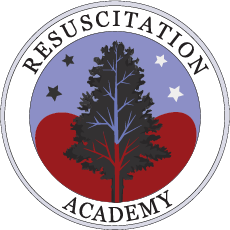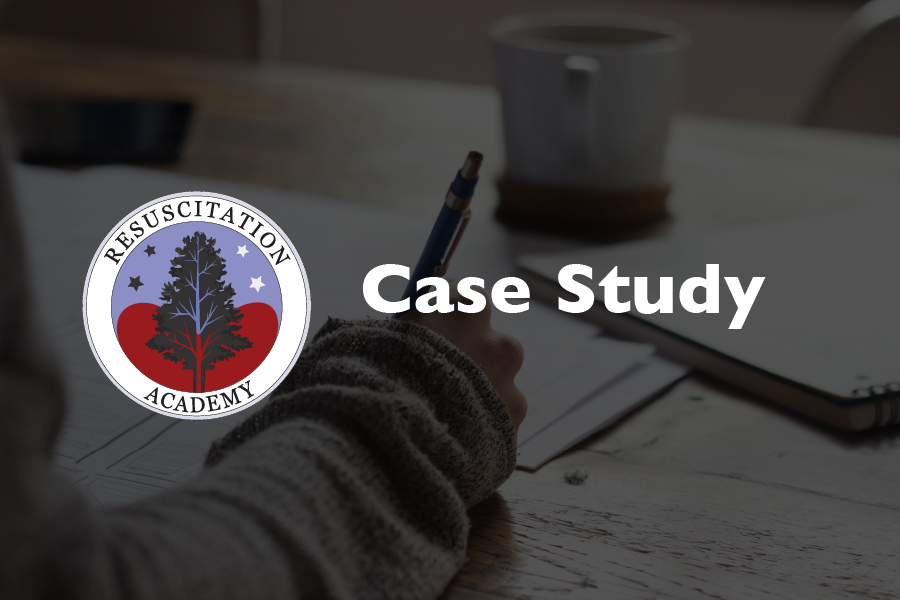Part 5: Out of Hospital Cardiac Arrest: The Future: The Possible
What follows are several “likely” future developments. The term likely is used advisedly. While the technologies are nascent their impact, either or in combination, could be huge.
The first involves a life detector.
Currently approximately 50% of cardiac arrests are unwitnessed. Minutes (or longer) may have transpired from the collapse until someone comes upon the inert body. Immense challenges exist in developing a life detector. To be useful the detector would need to have virtually zero false positives. False positives (in effect, false alarms) could easily overwhelm an EMS system (or someone in the house).
A variation on a life detector is a rhythm detector. Wearable devices (patches, watches) with or without alarms already exist to detect significant changes in pulse, such as atrial fibrillation, or very slow or fast heart rate. They may one day be able to detect and distinguish VF from movement artifact though the false positive problem remains. Wearable defibrillators exist that can detect VF and automatically shock the patient, but these are currently expensive as well as cumbersome with very limited clinical indications. The false alarm problem is obviated by an alarm to the wearer that VF is detected. If there is no response to abort the shock one is delivered.
The second likely future development involves smart defibrillators to guide the rescuers in resuscitation therapy based on the rhythm, respiratory and other biometric data.
For example, the rhythm may show a low amplitude VF and the smart defibrillator will advise epinephrine prior to shocking the patient. Such smart defibrillators could also integrate respiratory information as well as heart rhythm information and recommend the best sequence of medication and defibrillatory shocks. It is not inconceivable that such smart defibrillators could also integrate blood values such as pH and electrolytes to further guide intelligent therapy. Where this could be heading is to analyze multiple types of biometric data (blood chemistry, oxygenation, rhythm, oximetry) into a smart resuscitator which could guide therapy continuously throughout a resuscitation. One could call this biometric guided resuscitation therapy.
The third likely future development is a consumer automatic external defibrillator (AED).
Consumer AEDs are an attractive strategy as 75% of cardiac arrests occur in the home. In theory consumer AEDs have the potential to deliver a shock for VF much earlier than one provided by EMS personnel with a higher survival probability. The best evidence for rapid defibrillation was a study of cardiac arrest in gambling casinos which positioned AEDs throughout the location such that security personnel could retrieve an AED and reach the collapsed person within 3 minutes. The study reported a 75% survival rate for persons shocked within 3 minutes of collapse.
Since survival is directly related to time from collapse defibrillation with the potential to save many minutes and lives. For consumer AEDs to become widely adopted several issues must be addressed.
These include cost, dissemination, safety, proper use, integration with alarm centers, perception of sudden cardiac arrest risk, and advocacy.
The first issue is cost. While there is an over the counter AED currently approved by the FDA, it has not been widely adopted. One reason is its cost (about $1,000). Below are desirable characteristics of a consumer AED.
Inexpensive: Ideally $200 or less
Small and lightweight: Ideally the size of an iPad or a kindle
Long battery life: 10 years of more with AA batteries
Long pad life: 10 years or more
Automatic turn on with opening
Voice instructions
Automatically charge and automatically deliver a shock if VF is present
Detect VF through movement or chest compression
We believe such cost is attainable. Research colleagues of ours at the University of Washington have prototyped such a consumer device with component costs of $100.
The second issue is dissemination. Consumer AEDs offer new therapy options; however, they can only increase survival if the technology is widely disseminated into society. We think a consumer AED is similar to a smoke detector in terms of its integration into home life. The first step to adoption is awareness. The first generation of home smoke detectors were initially rather expensive and required special batteries, but as awareness spread the cost fell and batteries became commonplace. Currently the general public has little appreciation of resuscitation details. There is an awareness of the role of CPR but little awareness of how vital timely arrival of defibrillation is. Thus, education of the general public is important.
It is possible for legislation to play a role. As a safety device, consumer AEDs could be required in new home construction with appropriate labelling and accessible sites, such as next to the fire extinguisher or on the wall of the main bathroom. Legislation helped catalyze AEDs in public places such as exercise facilities or sporting venues. Today they are commonplace in many public and commercial sites.
The third issue is safety. Safety is a major concern of the FDA for any consumer or commercial medical device. Since an AED is considered a life saving device it must work reliably when operated.
A fourth issue is proper use. Proper use is another major concern of the FDA. Are consumers using the device as intended. We think proper labeling is key to proper use. A consumer device is not intended to replace commercial AEDs used in such settings as airlines, stadiums and other situations where there is a reasonable likelihood of cardiac arrest. Personnel such as police and security should have commercial AEDs since they have a duty to respond to medical emergencies.
Integration into the alarm center is the fifth issue. The ideal situation would be for all consumer AEDs stationed in homes to be equipped with location identification and alerting sounds when activated by the dispatch center. Such integration would require creative uses of Wi-Fi but the benefit would be for the dispatcher is know that there is an AED on premises and to trigger an alert sound so a bystander can know where is located and retrieve it.
The sixth issue is perception of CA risk. If people, especially elderly, do not perceive the risk of sudden cardiac arrest, they are unlikely to equip their home with an AED. Many people may perceive sudden cardiac arrest as a fatal event. Afterall, the current survival from witnessed VF is only 33%. We believe such a figure can be doubled or at least considerably improved. Earlier defibrillation is also likely to improve neurological recovery.
Last is the issue of advocacy. National organizations can do much to educate the public as well as advocate for consumer AEDs not unlike how fire departments advocated for home fire alarms. As two examples, we believe the missions of the American Association for Retired Persons and the American Heart Association are well aligned for promotion of home AEDs
There are other associated benefits of home AEDs. Many cities dispatch centers utilize cardiac arrest alerts sent via smart phone notifying nearby volunteers that a cardiac arrest has occurred along with precise identification of the location. The volunteer can then head to the location and perform CPR or use an AED if one is nearby. Conceivably a vast corps of volunteers could carry a consumer AED in their cars and bring to the scene the skills of CPR and defibrillation.
Is there a future for drone delivery of AEDs directly to the scene of a cardiac arrest as a means to provide rapid defibrillation? Frankly, while I can see the conceptual attractiveness of such an idea, I don’t see it playing much of a role except, perhaps, in some very limited situations.
Is Prevention Possible?
This blog has focused on actions to treat cardiac arrest and has not discussed the role of prevention. Part of the reason for this omission is that there currently is no way to prevent sudden cardiac arrest. However, since cardiac arrest is so strongly associated with underlying coronary artery disease, efforts to reduce heart disease will have the added benefit of reducing sudden cardiac arrest. Therefore, recommends for proper diet, regular exercise, no smoking, cholesterol lowering medications will have benefit. In the future, one can envision other possible preventions such as genetic detection of VF-prone patients, or better ways to reduce the incidence of coronary artery disease.
The Task Now – the Promise Ahead
There are opportunities to significantly increase survival from out of hospital cardiac arrest. Implementation of existing standards and training programs for telephone CPR and high-performance CPR will do much to improve survival. Future technologies offer the promise of even higher survival rates and maybe better methods of prevention will emerge.
We hope you enjoyed this 5-part series on the past, present, and future of resuscitation. We appreciate feedback and questions.
The Resuscitation Academy











There are opportunities to significantly increase survival from out of hospital cardiac arrest. Implementation of existing standards and training programs for telephone CPR and high-performance CPR will do much to improve survival.